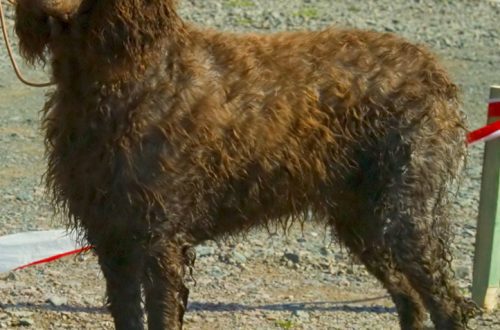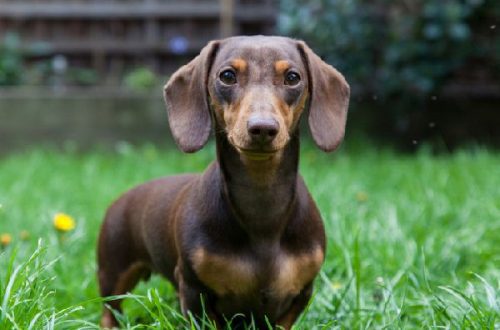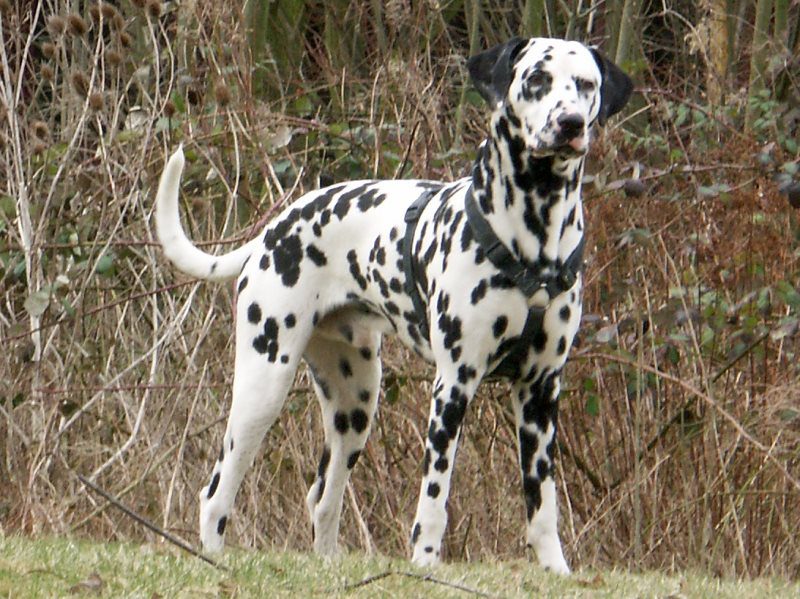
Dalmatian
The Dalmatian is an energetic and cheerful pet. Thanks to its bright appearance, you will definitely not go unnoticed during walks in the park and dog parks.
Contents
- Characteristics of Dalmatian
- Basic moments
- History of the Dalmatian breed
- Video: Dalmatian
- Appearance of a Dalmatian
- Photo of an adult Dalmatian
- Dalmatian character
- Education and training
- Care and maintenance
- Health and disease of the Dalmatian
- How to choose a puppy
- Photo of Dalmatian puppies
- How much does a dalmatian puppy cost
Characteristics of Dalmatian
| Country of origin | Croatia |
| The size | average |
| Growth | 56-61 cm |
| Weight | 32–42 kg |
| Age | up to 14 years old |
| FCI breed group | hounds and related breeds |
Basic moments
- These are quite large and very active animals, so keeping in a private house with the possibility of free range in a fenced area is preferable.
- Dalmatians need early socialization and proper upbringing.
- Without sufficient physical exertion, they turn into uncontrollable destructive dogs.
- Dalmatians are not suitable for stay-at-homes and families with small children.
- Despite the short coat, they shed intensively and need constant care.
- About 12% of puppies are born deaf.
- The pattern of spots on the body is unique for each individual.
- Only dogs with black or brown spots on a white background are allowed to participate in exhibitions, but other color options exist.
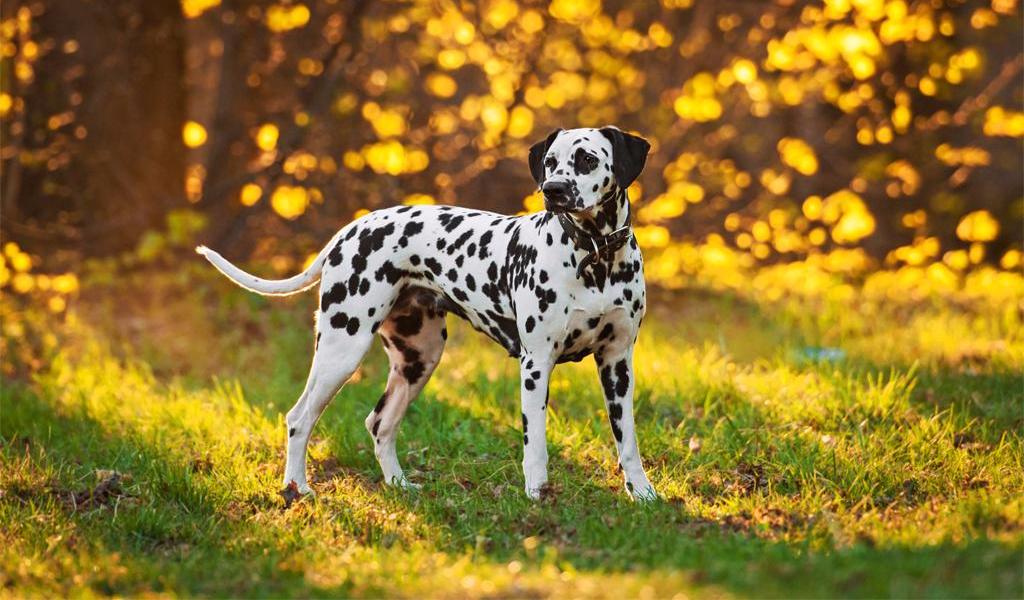
The Dalmatian is one of the breeds to which “media” and momentary popularity have done more harm than good. Dogs with a difficult character and high needs for daily exercise do not get along with every fan of the Disney cartoon. But experienced and responsible owners will find a devoted friend and a wonderful companion in an energetic creation.
History of the Dalmatian breed
The mention of spotted dogs is found in documents of different eras and states that have come down to us, starting from the ancient Egyptian papyrus scrolls. However, based on meager verbal descriptions, it is simply impossible to reasonably judge who exactly was the ancestor of modern Dalmatians.
The first more or less reliable evidence of the existence of the breed dates back to the 16th-17th centuries. White dogs with small dark markings are depicted in the surviving religious and secular works of art of those times: altar paintings in the Church of St. Mary (also known as “Gospe od anđela”) in a small town on the resort island of Lošinj, a fresco in the Franciscan monastery in Zaostrog, frescoes in the church Santa Maria Novella in Florence, ceremonial portraits by Venetian and Tuscan artists, which depict influential nobles – for example, Cosimo II de Medici. Since many of the earliest evidence was found in the historical region of Dalmatia, which is now part of Croatia, it is from here that it is customary to derive the roots of the brid. Yes, and the obvious consonance of names speaks in favor of this version, officially adopted by the FCI.
In the same place, on the warm shores of the Adriatic Sea, some “theoretical” works also saw the light. The Roman Catholic Archdiocese of Djakovo-Osijek has preserved in its archives the chronicles of Bishop Petar Bakic (1719) and Andreas Kecskeméta (1739), both of which speak of the Croatian-specific dogs Canis Dalmaticus. In 1771, the Welsh naturalist Thomas Pennant wrote the book Synopsis of Quadrupeds, where he first named the Dalmatian breed. In 1790, the English natural history scholar Thomas Bewick included the Dalmatians in a General History of the Quadrupeds.
In general, it should be said that it was in Britain that immigrants from Dalmatia gained particular popularity. The researchers suggest that representatives of other breeds were used here for breeding, in particular, black pointers and white English terriers. The latter died out over a hundred years ago, but they had a hand in the creation of many modern breeds: Boston Terrier, American Bulldog , Bull Terrier , American Staffordshire Terrier and others. By the efforts of the breeders of Foggy Albion, by the second half of the 18th century, the recognizable appearance of Dalmatians was formed today.
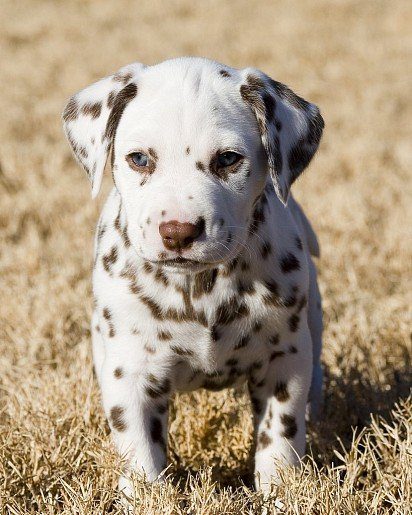
At the same time, the “Italian dogs”, as the British originally called them, noticed an amazing ability to run almost tirelessly for considerable distances, not inferior in speed to horse-drawn carriages. Swift-footed dogs were made guards of valuable “movable property” on city trips and long journeys – a kind of prototype of modern car alarms. In addition, during the trip, four-legged drivers followed the horses and with light bites forced tired or lazy animals to maintain the pace set by the driver. Since then, for several decades, the definition of carriage dogs has been attached to them.
Although the functions of the Dalmatians were not limited to this. They guarded houses, helped hunters of small and large game, served as “bodyguards” for noble ladies walking without a male company. During the Regency era, spotted pets became a sign of the owner’s high social status.
Once across the ocean, unusual dogs changed roles and instead of wealthy nobles, they were accompanied by voluntary fire brigades, which, before the mass introduction of internal combustion engines, could not do without real “horsepower”. Visible from afar, white “bells” served as a warning to other road users about the approach of fire fighters and helped clear the way no worse than sirens and light signals. But even after the carriages for extinguishing the flames became museum exhibits, many did not want to part with their living talismans. Today, charismatic dogs are a recognizable symbol of US firefighters.
As for the exhibition history, for the first time, dogs from Dalmatia were presented to the judgment of a professional jury and the public in 1860 in Birmingham. Thirty years later, a breeders’ club was formed and an official breed standard formulated. She had been recognized by the American Kennel Club two years earlier. The FCI registered the Dalmatian in 1926.
In Moscow, the first representatives of the spotted brotherhood appeared in 1982, but breeding in the USSR progressed very slowly due to the lack of fresh blood. And the demand for puppies was small, because many dog lovers simply had no idea about the existence of the breed. Monobreed clubs appeared only at the dawn of the 90s. Today, the largest concentration of kennels and owners of Dalmatians is in the capital, St. Petersburg, Nizhny Novgorod, Yekaterinburg, Novosibirsk and some other cities.
Video: Dalmatian
Appearance of a Dalmatian
Athletic and hardy, elegant dogs of medium to large size. Males weigh on average 18-27 kg with a height at the withers of 58-61 cm, females – 16-24 kg and 56-58 cm, respectively.
Head
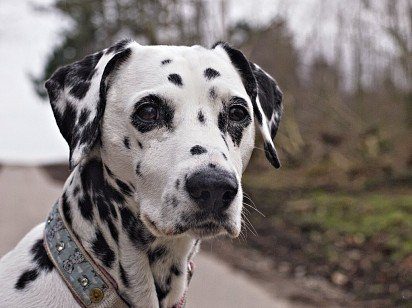

The Dalmatian’s head is in proportion to the body. Long, flat, not too wide between the ears. Muzzle with a pronounced stop, equal in length or slightly shorter than the occiput. There are no skin folds on the head.
Ears
Moderately large, widely set on the head, pressed to it on the sides. Triangular in shape with slightly rounded tips. The color is necessarily spotted, corresponds to the general coloring.
Eyes
The eyes of a Dalmatian are medium in size, oval in shape. The color corresponds to the color: dark brown for dogs with black spots, amber for brown spots. The look is clear and smart. The eyelids fit well to the eyeball. Their edges are well pigmented (depending on the color – black or brown).
Nose
The earlobe is broad, fully pigmented (black or brown according to the ground color), and the nostrils are wide open.
Lips and teeth
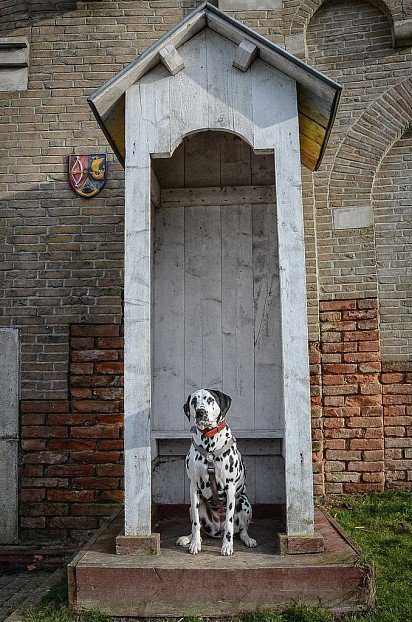

Lips close to the jaw. Jaws are strong. Scissor bite, upper teeth completely overlapping lower teeth.
Neck
Strong, fairly long.
Frame
The body of the Dalmatian is well built, the shoulders are muscular, with a deep chest and well arched ribs. The back is straight and strong. The loin and croup are muscular, the slope is insignificant.
limbs
The front legs are straight, the elbows are pressed to the body. The hind legs are muscular, the knees are strong and well developed. The paws resemble those of a cat: compact and rounded, the toes are arched. The nails may be pigmented depending on the base color.
Tail
The tail of the Dalmatian is quite long, spotted, straight. Thicker at the base, tapering towards the tip.
Wool
Short, dense, smooth, glossy, hard.
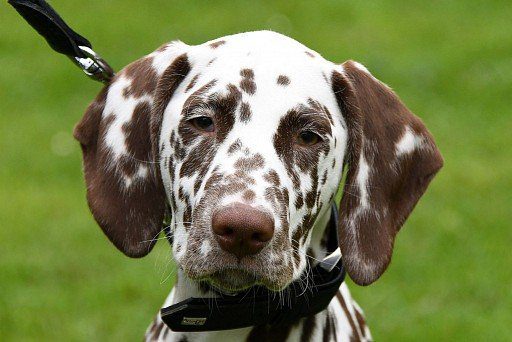

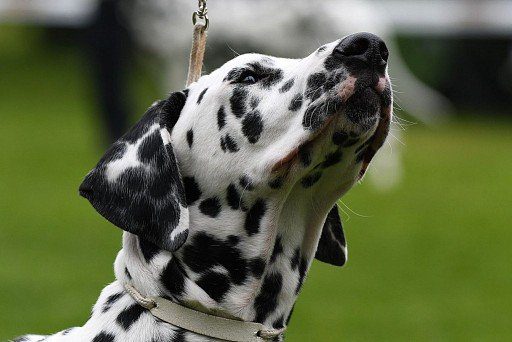

Color
On the main white background, there are black or brown (strictly one color!) spots with clear contours, which are located symmetrically along the body, on the head, ears and tail.
Photo of an adult Dalmatian
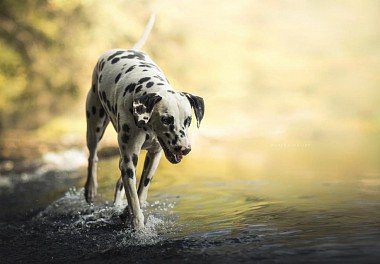

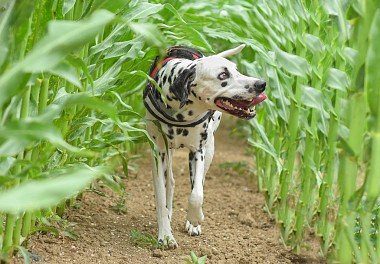

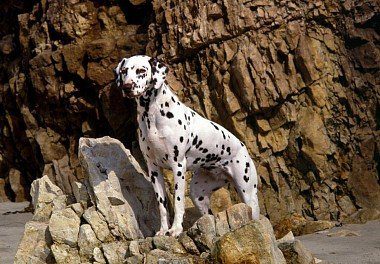

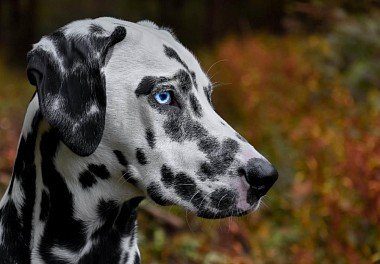

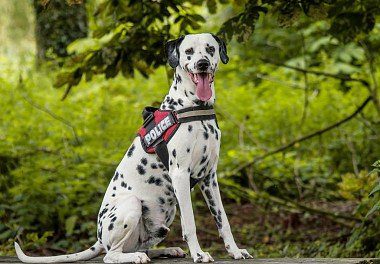

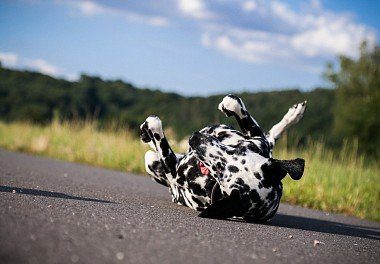

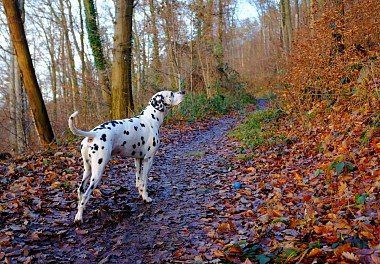

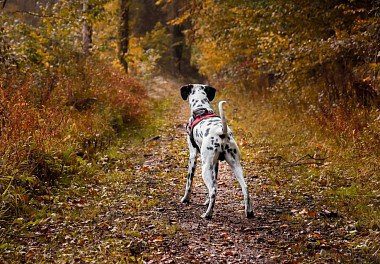

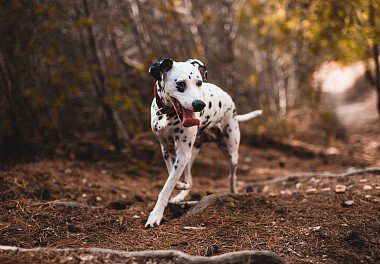

Dalmatian character
Dalmatians are not suitable for inexperienced owners and people who need the company of a phlegmatic “sofa” dog. Incredibly active by nature, without proper physical exertion, they direct unused energy to destructive pranks, damaging the home. In such a situation, the animal becomes uncontrollable, it does not obey commands and completely ignores prohibitions.
Dalmatian playing with a child
Failure to understand the underlying reason for such behavior has led to the formation of an erroneous opinion about low intelligence. If the Dalmatian does not respond to “No!” and “To me!”, this does not mean at all that he is stupid. The point is simply that the owner made serious mistakes during education, did not establish his authority and continues the chain of mistakes, not satisfying the natural needs of the pet in physical exercises.
Proper training, balanced and calm building relationships with a puppy, early socialization contribute to the formation of a healthy and strong psyche. Such dogs perfectly feel the mood of a person and adapt to it, they follow commands with pleasure, do not start fights on walking grounds, are restrained with strangers, and are friendly towards animals.
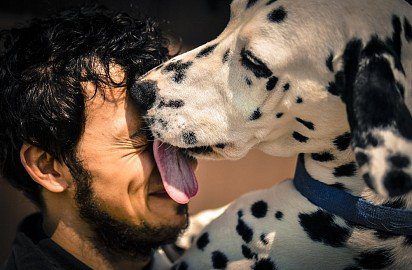

Dalmatians do not become attached to one “own” person, they equally love and protect all household members, while striving to take an active part in everything that people do. They get along well with other pets, especially if they grow up with them. It is in the genes to have a long-standing attraction to the company of horses, but few people today own a stable, so the company of a dog or a cat will be suitable.
For a family with young children, the arrival of the energetic “plum pudding”, as the English affectionately call these dogs, can be a problem. But not because by nature they are aggressive and capable of deliberately harming the little one. On the one hand, Dalmatians, impetuous and sharp by nature, do not measure their strength and often knock down babies who are inappropriately on their way. On the other hand, animals with hearing problems instinctively defend themselves against the “threat” when they are imperceptibly approached from behind or disturbed in their sleep, and it is difficult for the crumbs to immediately learn the subtleties of dealing with a special family member.
But with older children and teenagers, Dalmatians in most cases get along just fine, feeling a kindred restless soul.
Education and training
Dalmatians are among the breeds for which proper training and early socialization are incredibly important. Freedom-loving nature, unbridled energy, hunter’s instincts without control and restraint mechanisms formed in childhood lead to the appearance of an uncontrollable, destructive adult animal.
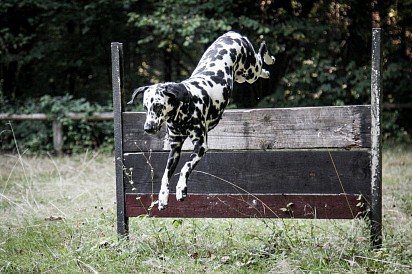

Learning basic commands and interacting with the outside world cannot be shelved. From the first days of the appearance of a puppy in your home, the education program should start. The little Dalmatian must clearly understand the boundaries of what is permitted and know that disobedience will have consequences. Of course, it is unacceptable to show aggression and use physical force, but the owner’s firm and stern voice, in which discontent is clearly expressed, is a sufficient punishment in itself.
Do not forget that visits to the walking grounds and participation in group classes with a dog handler can only begin when the puppy has received the required doses of mandatory vaccines and enough time has passed for the formation of immunity to diseases dangerous for the pet. It’s best to check with your veterinarian.
Well-trained dogs already in six months know and easily perform more than a dozen commands, including both standard and “artistic” ones like successive flips, “High five!” or bows. In general, it must be said that spotted circus performers love attention and are ready to make a lot of efforts to make their owners smile.
Care and maintenance
The ideal option for keeping a Dalmatian would be a spacious private house with a securely fenced area where he can walk freely during the day. However, it must be remembered that it is impossible for representatives of this breed to constantly live in an aviary in our climatic conditions – short hair does not protect against low temperatures.
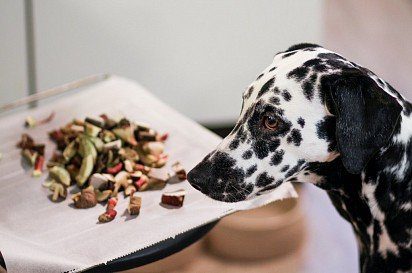

If you are the owner of a city apartment, long walks are a prerequisite for a peaceful existence. Moreover, not only the duration is important (at least an hour a day), but also the saturation with loads. It’s best if your dog is on a leash to accompany you on a run or bike ride – moving at a fast pace will burn up enough energy to not be adventurous when you return. An alternative can be exercises on an equipped obstacle course, just correctly measure the physical condition of the dog and the height of the barriers.
Dalmatians do not require complex and tedious care. Their “fur coat” does not fall off and does not need a haircut or frequent washing, however, molting occurs profusely and almost continuously, and becomes especially strong at the border of warm and cold seasons. In order to minimize the woolen cover in the house, it is recommended to comb the pet as often as possible (at least 2-3 times a week) with a brush or a special mitten.
Otherwise, standard procedures are sufficient: monitor the condition of the ears and eyes, the length of the claws, regularly brush your teeth with veterinary paste. Nutrition should be balanced and healthy. The easiest way to achieve this is with the help of premium and super-premium ready-made feeds. Remember that overeating combined with low physical activity is fraught with obesity.
Health and disease of the Dalmatian
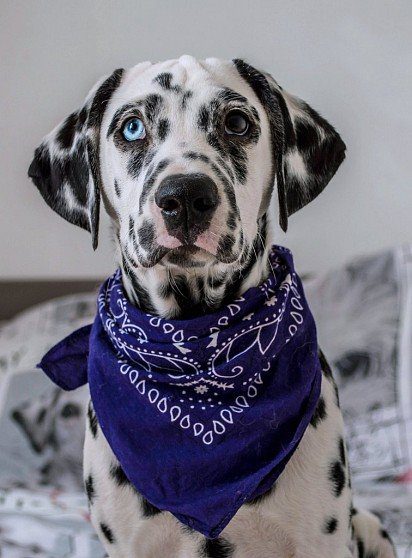

The average life expectancy of Dalmatians is 10-13 years.
The biggest problem of the breed is deafness. Hearing problems of varying severity occur in almost a third of dogs. 12% of Dalmatians are born completely deaf. An efficient solution has not yet been found. Although only healthy animals are allowed to be bred, they also have sick puppies. The latter, however, lead a full life as pets. This shortcoming can be detected in the first weeks with the help of modern tests.
Because of the metabolic nature of Dalmatians, bladder stones are common. They are also prone to skin allergies and hip dysplasia. Epilepsy, autoimmune liver diseases, osteochondrosis of the shoulder joint, osteomyelitis, dilated cardiomyopathy, hypothyroidism, paralysis of the larynx and other nonspecific diseases are recorded less frequently.
Since many diseases are hereditary or congenital in nature, their appearance can be predicted based on the pedigree. Responsible breeders always provide comprehensive information about the health of parents, as well as “grandparents” and “grandparents”.
How to choose a puppy
The key to a successful acquisition is a balanced and carefully thought-out selection of a breeder. Only catteries with an impeccable reputation can guarantee that the new member of your family will be healthy physically and psychologically stable. Since Dalmatian puppies are given to permanent owners no earlier than at 10-12 weeks, they have time to undergo the necessary medical examinations and show their peculiarities.
A good breeder will ask you no less questions than you ask him, because for him every four-legged baby is not a living commodity, but a person, so it is important to understand in which family he will live, in what conditions.
And you, in turn, have the full right to get to know the parents and study their documents, the veterinarian’s opinion on the puppy’s health and the results of the BAER test (Brainstem Auditory Evoked Response) – an electrodiagnostic hearing test.
It is important to see the conditions in which the mother and babies are kept, learn about nutrition and personally communicate with the puppy you like in order to assess his ability to make contact with a person and adequately respond to the outside world.
Photo of Dalmatian puppies
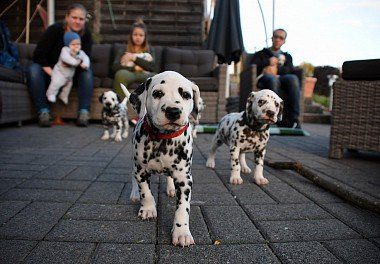

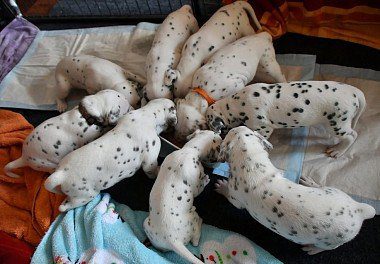

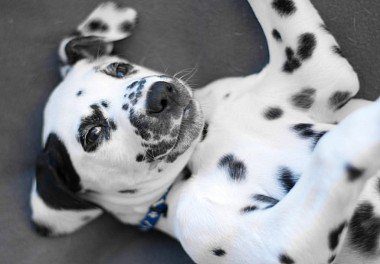

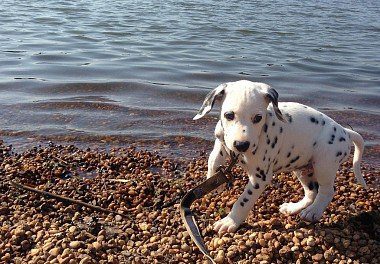

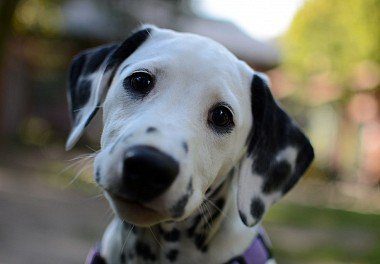

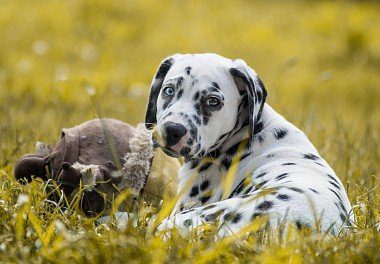

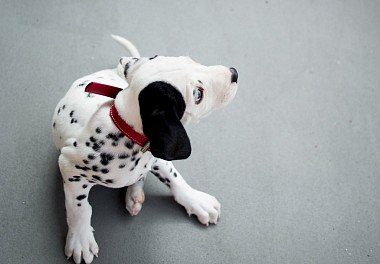

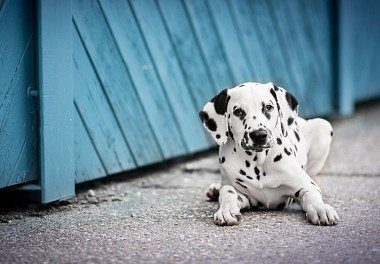

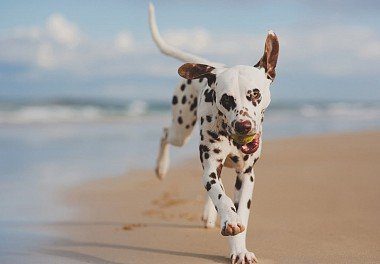

How much does a dalmatian puppy cost
On the websites of private ads for a young Dalmatian “without documents” they ask from 100 to 200$. But you must understand that in this case it is impossible to know whether both parents were really representatives of the breed you are interested in. And more importantly, there are no guarantees that over time the animal will not show certain pathologies that are life-threatening or significantly affect its quality.
The price of Dalmatians in kennels varies in different regions and fluctuates even more significantly based on which class a particular puppy belongs to. Depending on individual characteristics and compliance with the breed standard, puppies from the same litter with FCI documents and veterinary passports will cost from 600 to 900$. And here it is up to you to decide whether participation in exhibitions is planned with the prospect of high-profile victories, or it is enough that a devoted and mischievous friend appears in your house.






